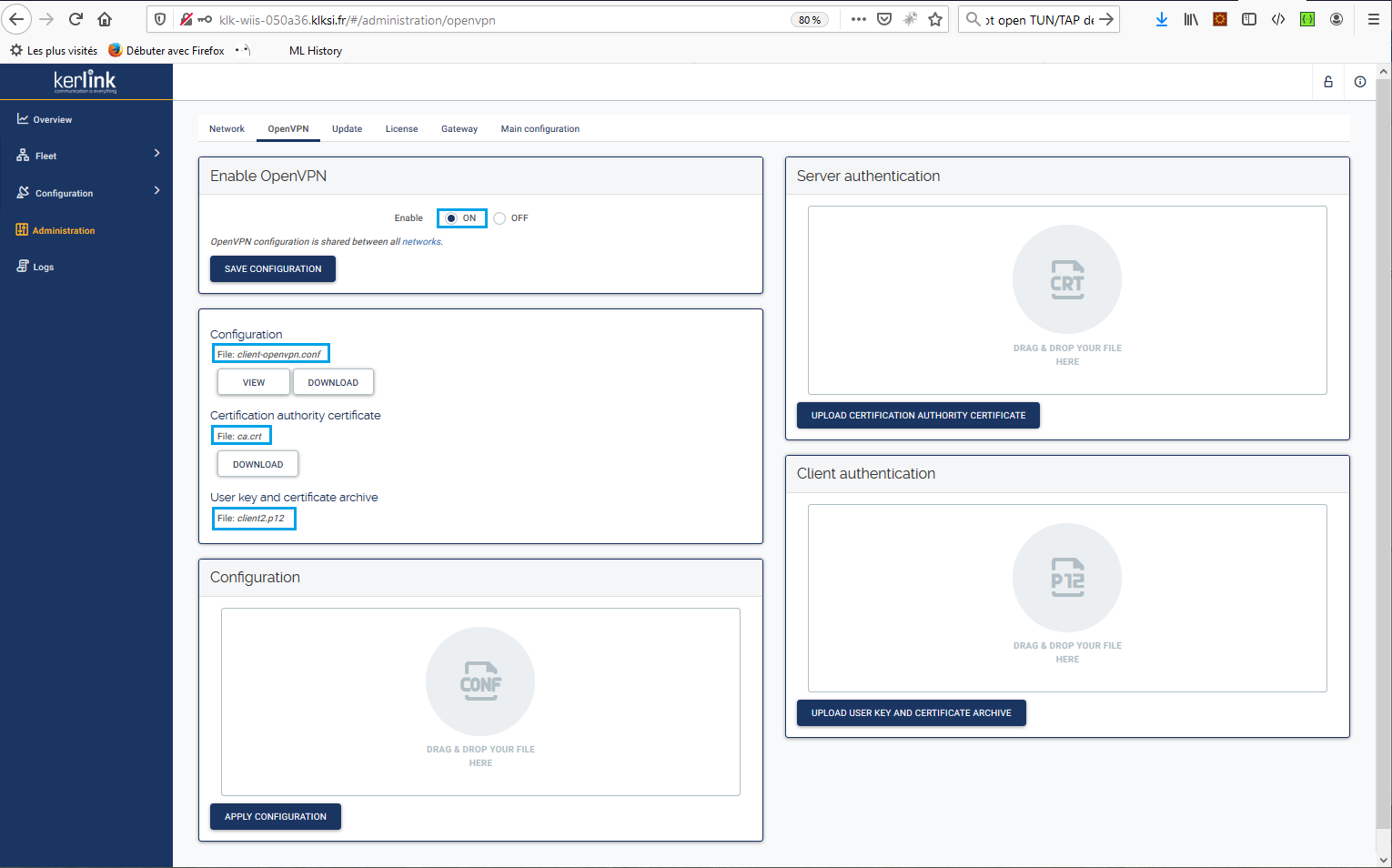Table of Contents
OpenVPN
This topic is destined to users with some basic knowledge about VPN, who know how to create and setup a VPN client/server.
Creating the PKI
VPN Server Setup/Configuration
Here an example of creating and configuring an OpenVPN server
VPN Client Setup/Configuration
Modify the configuration file
The configuration of the VPN requires:
- A client configuration file, named
client-openvpn.conf. This is the main configuration file.
Make sure that non-interactive authentication is enabled (the connection is established by a daemon, the password cannot be entered manually) - A “Certification Authority Certificate” file, authenticating the remote server,
ca.crt - A “User key and certificate archive” file, authenticating the Wanesy SPN gateway (the client),
client.p12
All those files have to be uploaded via the web UI.
Here is an example of a client configuration file:
- client-openvpn.conf.conf
################################################# # # # Client-side OpenVPN 2.X config file for # # connecting to multi-client server. # # # # Comments are preceded with '#' or ';' # # # ################################################# # Specify that we are a client and that we # will be pulling certain config file directives # from the server. client tls-client #remote-cert-tls server # Protocol proto udp #Tunnel dev tun #Server remote 192.168.1.14 #Certification Authority Certificate - Server Authentication ca ca.crt #User Key and Certificate - Client Authentication pkcs12 client.p12 cipher AES-256-CBC #auth SHA256 tls-version-min "1.0" tls-version-max "1.0" mssfix 1200 comp-lzo
Note: if you set a passphrase to access your private key, just add the following line in your configuration file :
askpass pass.txt
Fill the pass.txt file with your password and protect it from reading to others that are not root:
# chmod 600 pass.txt
The two other files (.crt and .p12) have to be generated using the PKI.
Enable OpenVPN over the kerlink gateway Web interface
Select the “Enable” button from the Administration > OpenVPN menu option and drag and drop the following files :
ca.crtclient.p12client-openvpn.conf
Automatically the openvpn process will be launch at boot time and be monitored by the monit tool.
Connection
Once the files are uploaded and the VPN feature is activated in the administration page, the VPN tunnel will automatically be created.
